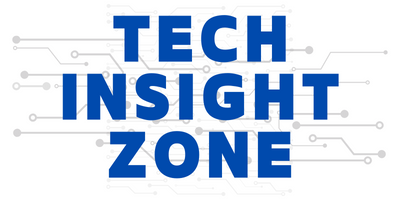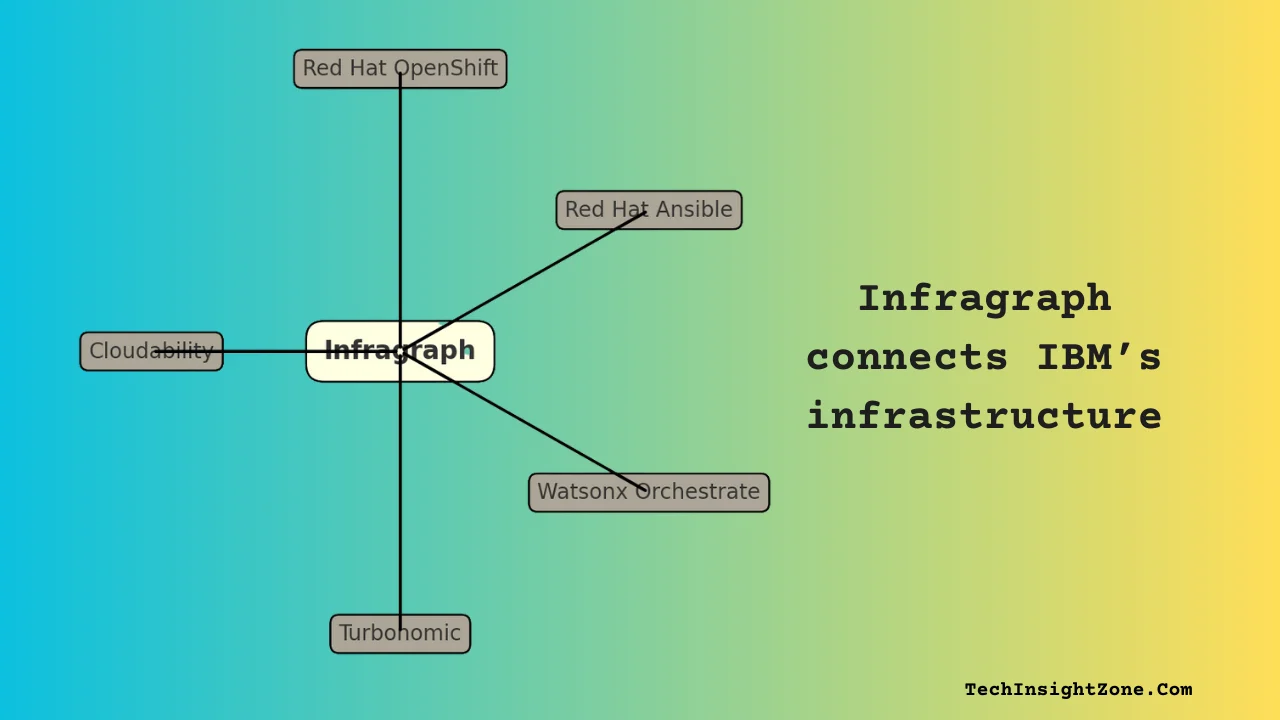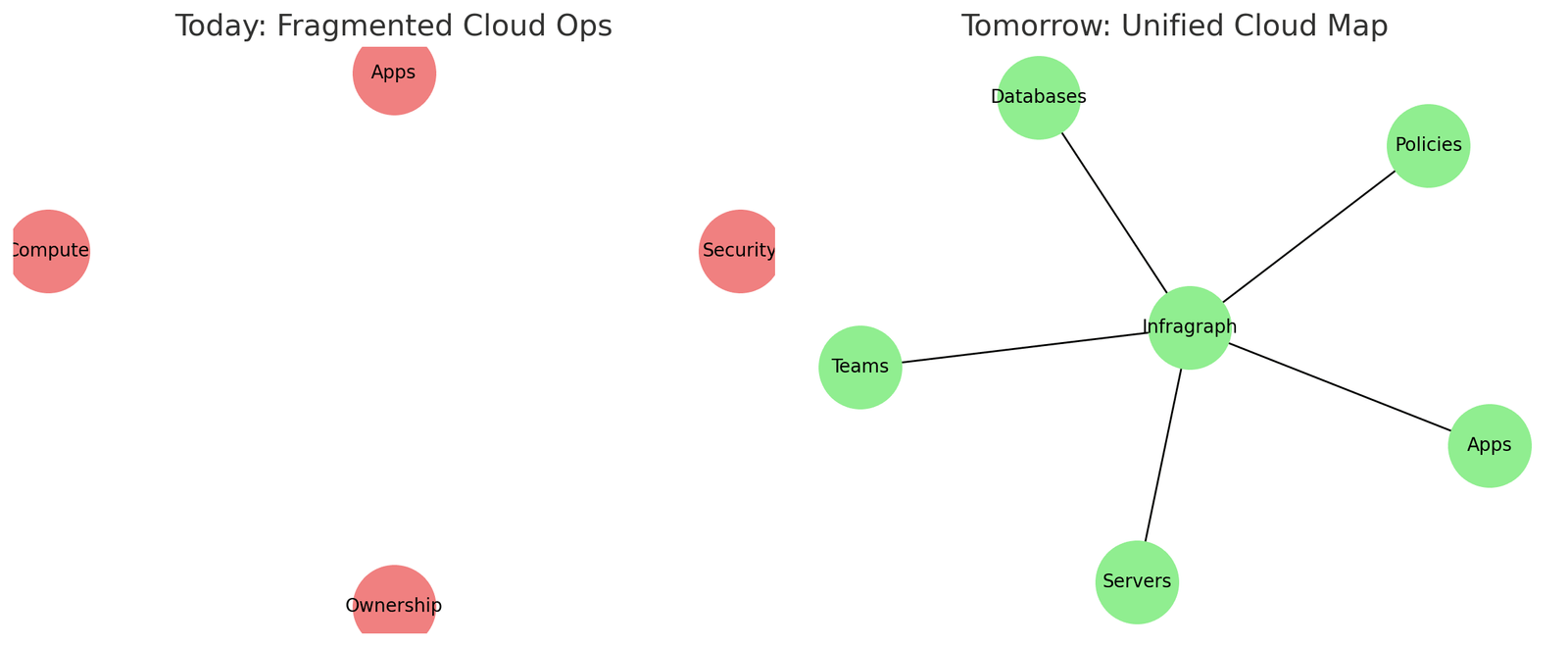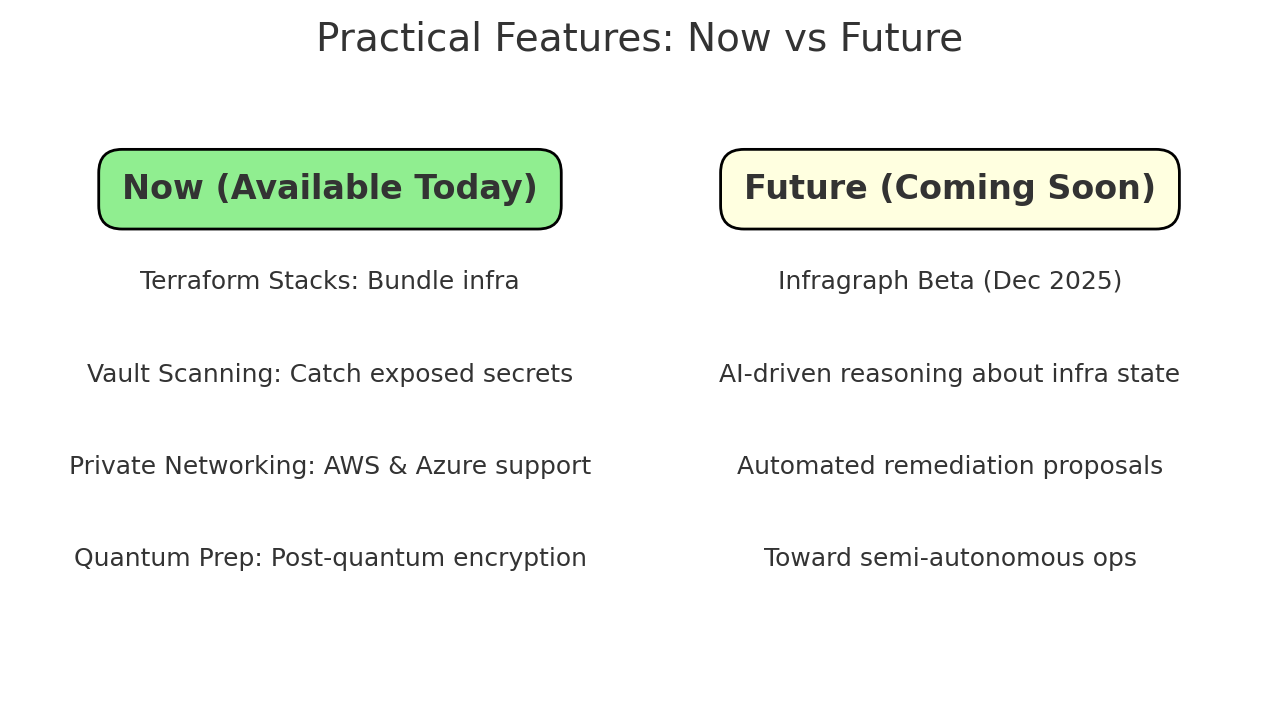Cloud infrastructure has always been a double-edged sword. On one hand, it lets companies scale fast, tap into global computing power, and build apps in days instead of months.
On the other, it’s messy: servers in one place, apps in another, databases scattered across multiple providers, and teams constantly trying to keep it all glued together.
At HashiConf 2025 — the annual conference for HashiCorp (and the first since the company was acquired by IBM) — the big reveal was something called Project Infragraph.
The idea? To give your cloud a kind of “brain” — a living, real-time map of all the moving parts that not only shows what’s happening, but eventually learns how to fix problems on its own.
Why HashiCorp Thinks Your Cloud Needs a Brain? The Problem: Cloud Chaos
Think about how Google Maps transformed travel. Before, you had a stack of directions, but if a road closed, you were stuck. Now, Maps shows you where you are, reroutes you in real time, and even warns you about speed traps.
Today’s cloud operations don’t have that kind of system. Most companies have dozens of dashboards, each showing one slice of the picture: who owns which service, how apps are connected, where security risks are hiding.
The result? Teams waste hours chasing context before they can actually fix anything.
HashiCorp’s bet is that Project Infragraph will become the “Google Maps” of cloud infrastructure.
What Project Infragraph Does
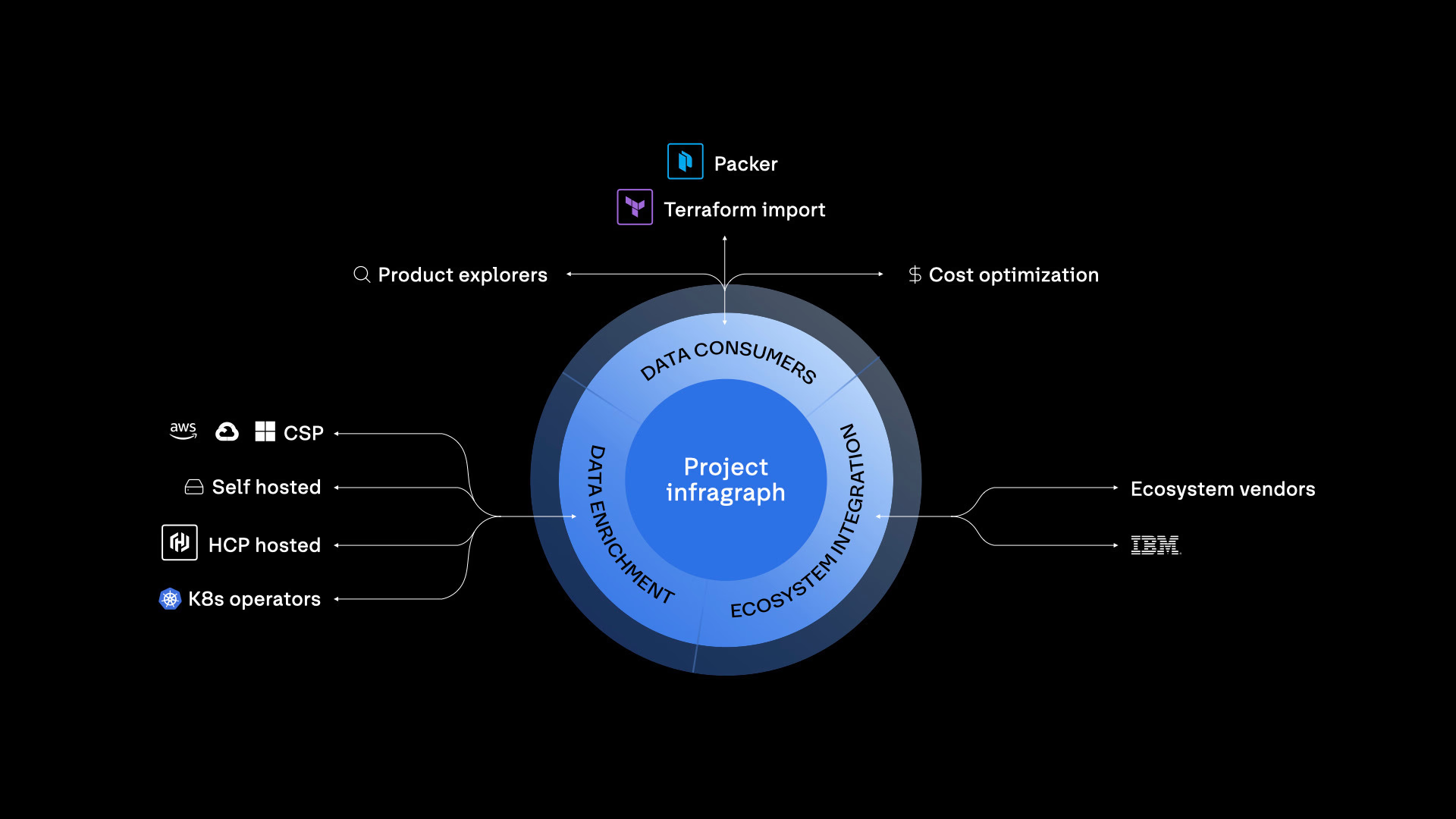
Infragraph isn’t just another tool. It’s a real-time graph — a constantly updated map that shows how your infrastructure, applications, services, and even team ownership are connected.
Here’s what it promises:
Real-time visibility: Instead of digging into logs or switching tools, you see how everything fits together instantly.
Smarter decisions: If an application slows down, the graph shows which database, service, or team might be responsible.
Unified control: Security, ownership, and automation all draw from the same map, reducing duplication and blind spots.
AI readiness: Over time, Infragraph is designed to let AI reason about your setup — suggesting fixes, optimizing performance, even drafting runbooks for engineers.
In other words, it’s not just automation (following scripts). It’s a step toward agentic infrastructure — systems that can observe, reason, and act with context.
IBM’s Bigger Play
This is HashiCorp’s first major product launch under IBM, and the timing makes sense. IBM has been loudly positioning itself as the enterprise AI company. Tools like Watsonx Orchestrate and Turbonomic already promise AI-driven optimization for business processes.
By weaving Infragraph into that ecosystem — alongside Red Hat OpenShift, Ansible, and IBM’s AI stack — IBM isn’t just selling infrastructure tools. It’s trying to build the control plane for the AI era, where automation and intelligence meet.
For IBM, this isn’t about another product. It’s about creating the layer where infrastructure, security, and AI all speak the same language.
Beyond Buzzwords: What’s Available Now
Of course, all this “AI-ready infrastructure” talk can feel far-off. But HashiCorp also shipped practical updates you can use today:
Terraform Stacks: Bundle complex infrastructure components into one deployable unit (like ordering a “combo meal” instead of each item separately).
Natural language controls: Early experiments let engineers manage infrastructure by typing simple requests (“spin up a test server”) instead of writing long code scripts.
Secrets management: New Vault features make it easier to keep passwords, keys, and credentials safe — even automatically flagging exposed secrets in tools like Jira or IDEs.
Security upgrades: Credential injection (so users never even see passwords), quantum-resistant cryptography prep, and private networking for AWS and Azure environments.
These updates are stepping stones: they reduce today’s pain while laying the foundation for tomorrow’s AI-powered workflows.
Why It’s a Big Deal
If HashiCorp and IBM pull this off, cloud teams could move from:
Reactive firefighting (“something’s broken, find the problem”)
→ Proactive management (“the system shows where risks are and how to fix them”)
→ Autonomous operations (“the system suggests and even acts on solutions”).
That’s a huge leap. It could mean lower downtime, faster innovation, and stronger security — without hiring armies of engineers.
Of course, it also raises questions. How much should we trust AI-driven decisions in critical infrastructure? How do we balance speed with accountability? And will enterprises be comfortable letting systems “act” on their own?
What to Watch
The private beta for Infragraph opens in December 2025, and the early test cases will reveal whether it delivers real value or just another layer of abstraction.
If successful, Infragraph could become as foundational as Terraform was a decade ago — shifting not just how infrastructure is managed, but how it is understood.
For IBM, this is about more than a product launch. It’s about answering a simple but profound question: Can infrastructure not just run, but think?
And while Infragraph points toward an AI-driven future for infrastructure, IBM is also preparing for another major shift in technology: the rise of quantum computing.
At Mobile World Congress 2025, IBM and Vodafone showcased how Quantum Safe cryptography can protect everyday users from tomorrow’s cyber threats — a reminder that the future of infrastructure isn’t just about intelligence, but also resilience. Read how IBM and Vodafone are future-proofing mobile security.
